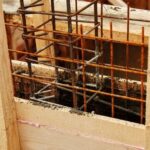An individual retirement account (IRA) is a valuable tool for saving money for retirement, but did you know that it can also be used for other financial needs? If you’re considering a home improvement project and need funds to make it happen, withdrawing money from your IRA might be an option worth exploring. In this article, we will delve into the basics of IRA withdrawals, the potential benefits of using these funds for home improvement, and other important considerations.
Before we dive into the specifics, let’s start with a brief overview of what an IRA is and its purpose. An IRA is a type of investment account that helps individuals save for retirement. It offers tax advantages and can include various investments such as stocks, bonds, and mutual funds. However, many people are unaware that some IRAs allow penalty-free withdrawals for specific purposes before reaching retirement age.
In the context of home improvement, utilizing funds from your IRA may provide several benefits. By tapping into your savings in this account, you can potentially finance your project without taking on additional debt or depleting other investment accounts. This option allows you to use your hard-earned money to improve your living space while still preserving the ability to grow your retirement savings over time.
Throughout this article, we will discuss the different types of IRAs available and their associated rules. We will examine the penalties and taxes associated with early withdrawals and explore potential exceptions or exemptions that may apply when using IRA funds for home improvements.
Additionally, we will address both the advantages and disadvantages of withdrawing from an IRA for home improvement purposes. Finally, we will look at alternative financing options to help you make an informed decision that aligns with your financial goals.
The Home Improvement Scenario
When it comes to home improvement projects, the expenses can quickly add up. From kitchen renovations to bathroom remodels and everything in between, homeowners often find themselves searching for ways to finance these projects. One potential option to consider is withdrawing money from your Individual Retirement Account (IRA). By understanding the common expenses associated with home improvement projects and how an IRA withdrawal can help, you can make an informed decision about using this source of funds.
Common Home Improvement Expenses:
- Remodeling Projects: Whether you’re looking to update your outdated kitchen or add a new room to accommodate a growing family, remodeling projects can be quite costly. Common expenses may include materials, labor costs, permits, and professional fees.
- Repairs and Maintenance: Homeowners frequently encounter unexpected repairs and maintenance needs that require immediate attention. These could range from fixing a leaky roof or replacing old plumbing fixtures to repairing damages caused by natural disasters.
- Energy Efficiency Upgrades: Making energy-efficient upgrades not only benefits the environment but also helps homeowners save on energy bills. Expenses such as installing solar panels, upgrading insulation, or replacing old appliances with energy-efficient ones are common in this category.
How an IRA Can Help:
Using funds from your IRA for home improvement projects can provide several benefits:
- Accessibility: Unlike some retirement accounts that have restrictions on withdrawals before a certain age, IRAs generally allow for penalty-free withdrawals for qualified purposes such as buying a first home or paying for qualified education expenses.
- Tax Advantages: Depending on the type of IRA you have (Traditional or Roth), there may be different tax advantages associated with withdrawing funds for home improvements. Consultation with a tax professional is essential to understand the specifics of your situation.
- Potential Growth Loss Mitigation: While tapping into your retirement savings may seem like depleting future funds, investing in home improvements may increase the value of your property. This potential growth can help mitigate the loss of future retirement savings.
By understanding the common expenses associated with home improvement projects and how an IRA can help, homeowners can make an informed decision about using this source of funds. However, it is crucial to consider the specific rules and regulations associated with different types of IRAs, as well as the potential drawbacks and risks involved in withdrawing from your retirement account.
In the next section, we will explore the various types of IRAs and their rules to provide a comprehensive understanding of these factors.
Know Your IRA
When considering withdrawing money from your IRA for home improvement purposes, it is important to understand the different types of IRAs and their associated rules. There are several types of IRAs available, including Traditional IRAs, Roth IRAs, SIMPLE IRAs, and SEP-IRAs. Each type has its own eligibility criteria, contribution limits, and tax advantages.
- Traditional IRAs: This type of IRA allows individuals to make tax-deductible contributions with the potential for tax-deferred growth. Withdrawals from a Traditional IRA are generally subject to income tax at retirement age.
- Roth IRAs: Unlike Traditional IRAs, contributions to a Roth IRA are not tax-deductible but withdrawals in retirement are typically tax-free. Additionally, Roth IRAs offer more flexibility when it comes to early withdrawals for qualified expenses such as a first-time home purchase.
- SIMPLE IRAs: This type of IRA is primarily designed for small businesses and self-employed individuals. Contributions can be made by both employees and employers, and withdrawals are generally taxed as ordinary income.
- SEP-IRAs: SEP-IRAs are similar to Traditional IRAs but are specifically designed for self-employed individuals or small business owners with employees. Contributions can be made by both the individual and their employer, and withdrawals are subject to ordinary income tax.
Understanding the specific rules associated with each type of IRA is crucial before making any decisions about using these funds for home improvement projects. Additionally, it is important to note that there are contribution limits for each type of IRA, so you may need to consult with a financial advisor or tax professional to determine how much you can withdraw for home improvement expenses without exceeding your annual limits.
It’s essential to keep in mind that the IRS imposes penalties on early withdrawals from an IRA made before age 59 ½ unless an exception applies. In the case of using IRA funds for home improvement, there is a provision that allows first-time homebuyers to withdraw up to $10,000 penalty-free from a Traditional or Roth IRA.
However, it is crucial to meet certain criteria and follow specific guidelines outlined by the IRS to avoid penalties and ensure eligibility.
Before deciding to withdraw money from your IRA for home improvement purposes, be sure to weigh the pros and cons of each type of IRA, consider any potential tax implications or penalties associated with early withdrawals, and seek advice from financial professionals or tax advisors who can provide personalized guidance based on your individual circumstances.
Understanding IRA Withdrawal Penalties and Taxes
Explaining Early Withdrawal Penalties
When considering whether to withdraw money from an Individual Retirement Account (IRA) for home improvement, it is crucial to understand the potential penalties associated with early withdrawals. Typically, if you withdraw funds from your IRA before reaching the age of 59½, you may be subject to an early withdrawal penalty of 10% on the amount withdrawn. This penalty is in addition to any applicable income taxes that you may owe.
The purpose of this penalty is to discourage individuals from prematurely tapping into their retirement savings, as IRAs are designed to provide income during retirement. However, there are certain exceptions and exemptions that can potentially waive or reduce this penalty.
Addressing Tax Implications
In addition to potential penalties, withdrawing money from your IRA for home improvement purposes may also have tax implications. The amount of taxes owed will depend on the type of IRA you have – Traditional or Roth – as well as your individual circumstances.
With a Traditional IRA, withdrawals are generally treated as taxable income. This means that if you withdraw $10,000 for a home improvement project and fall within the 25% tax bracket, you could owe $2,500 in federal income taxes. On the other hand, Roth IRA withdrawals are typically tax-free if certain conditions are met.
It is important to consult with a tax professional or financial advisor before making any decisions regarding IRA withdrawals for home improvement projects. They can help determine the potential tax consequences based on your specific situation and advise on strategies for minimizing your tax liability.
Potential Exceptions and Exemptions
While early withdrawal penalties and taxes can deter individuals from using their IRAs for home improvements, there are some exceptions and exemptions that may alleviate these concerns. One notable exemption is the first-time homebuyer provision.
Under this provision, individuals who haven’t owned a primary residence in two years may be able to withdraw up to $10,000 from their IRA without incurring the 10% early withdrawal penalty. However, this exemption only applies to Traditional IRAs and may still be subject to income taxes.
Other exceptions that may waive the early withdrawal penalty include using IRA funds for higher education expenses, medical expenses exceeding a certain percentage of your income, or if you become disabled. It is crucial to understand these exceptions and exemptions before making any decisions regarding your IRA withdrawals and consult with a financial professional for guidance specific to your situation.
Evaluating the Pros and Cons of Withdrawing from an IRA for Home Improvement
When considering using funds from your IRA for home improvement purposes, it is important to carefully evaluate the potential advantages and disadvantages of this decision. Below are some key factors to consider when evaluating whether withdrawing from your IRA is the right choice for you:
Pros of Withdrawing from an IRA for Home Improvement:
- Flexibility: Utilizing funds from your IRA can offer greater flexibility compared to traditional financing options like loans or credit cards. You have control over how much money you withdraw and when, allowing you to customize your home improvement project based on your specific needs.
- Tax Benefits: Depending on the type of IRA you have, there may be potential tax advantages to withdrawing funds for home improvement. For example, if you have a Roth IRA, qualified withdrawals are tax-free, meaning that any money withdrawn will not be subject to income tax.
- Avoiding Debt: By using funds from your IRA, you can avoid taking on additional debt through loans or credit lines. This can be particularly advantageous if you are concerned about adding financial obligations or negatively impacting your credit score.
Cons of Withdrawing from an IRA for Home Improvement:
- Retirement Savings Impact: When you withdraw money from your IRA, especially if done early or in substantial amounts, it can significantly impact your retirement savings. It is important to carefully consider the long-term implications of reducing your retirement nest egg.
- Potential Penalties: Depending on your specific situation and the type of IRA you have, withdrawing funds before reaching retirement age (typically 59 ½) may result in penalties imposed by the IRS. These penalties can range from 10% of the withdrawal amount to even more severe consequences.
- Lost Investment Growth: Taking funds out of your IRA means that they are no longer invested and benefiting from potential growth in the market. Over time, missed investment growth can have a substantial impact on the overall value of your retirement savings.
| Pros | Cons |
|---|---|
| Flexibility | Retirement Savings Impact |
| Tax Benefits | Potential Penalties |
| Avoiding Debt | Lost Investment Growth |
Exploring Alternative Financing Options for Home Improvement
When considering funding home improvement projects, withdrawing money from an IRA is not the only option available. There are alternative financing options that may be worth exploring before making a decision. This section will introduce some of these alternatives and discuss their comparative benefits and considerations.
Home Equity Loans
One alternative to withdrawing money from your IRA is to take out a home equity loan. This type of loan allows homeowners to borrow against the equity they have built up in their property. The amount you can borrow is typically determined by the appraised value of your home minus any outstanding mortgage balance.
The main advantage of a home equity loan is that it often offers lower interest rates compared to other types of loans, such as personal loans or credit cards. Additionally, the interest paid on a home equity loan may be tax deductible, providing potential savings come tax season. However, it’s important to note that defaulting on the loan can result in foreclosure since it is secured by your property.
Personal Loans
Another option for financing home improvement projects is taking out a personal loan. These loans are typically unsecured, meaning they don’t require collateral like your home or car. Personal loans generally have higher interest rates compared to home equity loans but can still be a viable option for smaller projects or if you don’t have substantial equity in your home.
Personal loans are often quick and easy to obtain, with faster approval processes and less paperwork compared to other types of loans. They provide flexibility in terms of repayment and typically offer fixed interest rates throughout the term of the loan. However, keep in mind that defaulting on a personal loan can negatively impact your credit score and make it more difficult to secure future financing.
It’s essential to carefully consider each alternative financing option’s terms, interest rates, repayment periods, and overall costs before making a decision for funding your home improvement project. Consulting with financial advisors or loan specialists can help you evaluate which option is best suited to your specific needs and financial situation.
Steps for Withdrawing Money from an IRA for Home Improvement
If you have decided to withdraw money from your IRA for home improvements, it’s important to understand the steps involved in the withdrawal process and the documentation you will need. While the specific requirements may vary depending on the type of IRA you have, there are some general guidelines to keep in mind.
- Review Your IRA Agreement: Before proceeding with a withdrawal, carefully review your IRA agreement to ensure that you are aware of any specific rules or restrictions that apply. Different types of IRAs may have different withdrawal requirements and penalties, so it’s essential to familiarize yourself with these details.
- Contact Your IRA Custodian: Start by reaching out to your IRA custodian, whether it’s a bank, brokerage firm, or other financial institution. Inform them of your intention to make a withdrawal and inquire about their specific procedures and documentation requirements. They will guide you through the process and provide you with any necessary forms.
- Complete Required Forms: Typically, you will need to fill out a distribution request form provided by your custodian. This form will ask for information such as your account details, the amount you wish to withdraw, and the purpose of the withdrawal (in this case, home improvement). Make sure to accurately complete all sections of the form and double-check for any additional documents or supporting evidence required.
- Provide Proof of Expenditure: In most cases, when withdrawing money from an IRA for home improvement purposes, you may be required to provide documentation demonstrating how the funds will be used. This could include estimates from contractors or receipts for materials purchased. Keep track of all expenses related to your home improvement project as this documentation may be requested during tax filing.
- Submitting Your Request: Once all necessary forms are completed and supporting documents gathered, submit your request for withdrawal along with any accompanying paperwork as instructed by your custodian. It is generally recommended to keep copies of all documents for your records.
Remember, it’s crucial to follow the guidelines provided by your IRA custodian and consult with a financial advisor or tax professional for personalized advice. They can help you navigate the withdrawal process, ensure compliance with IRS regulations, and make informed decisions regarding your home improvement project. With the correct documentation and careful planning, withdrawing money from an IRA for home improvements could be a viable option to fund your project.
Case Studies
One of the most effective ways to understand the potential benefits and risks of withdrawing money from an IRA for home improvement is by examining real-life examples. These case studies provide valuable insights into how individuals have successfully used their IRAs to fund their home improvement projects.
In the first case study, we have John and Sarah, a couple in their 40s who wanted to renovate their outdated kitchen. They had been contributing to a Traditional IRA for several years and realized that they had built up a significant amount of savings. After consulting with a financial advisor, they decided to withdraw $30,000 from their IRA to finance the kitchen renovation.
The withdrawal was made under the first-time homebuyer provision, which allowed them to avoid the early withdrawal penalty. With the funds from their IRA, they were able to transform their kitchen into a modern and functional space, increasing the value of their home.
Another example involves Mary, a widow in her 60s who recently retired and wanted to make her home more accessible as she aged. She had a Roth IRA that she had been contributing to for many years. Mary decided to withdraw $20,000 from her Roth IRA to install grab bars in her bathroom and make other modifications that would improve safety and mobility around the house.
Since she was over 59½ years old and had held the account for at least five years, there were no taxes or penalties associated with this withdrawal. Mary’s withdrawal allowed her to age in place comfortably without having to rely on additional financing options.
These case studies demonstrate how individuals can strategically use their IRAs for home improvement purposes while adhering to specific rules and regulations. It is important for individuals considering an IRA withdrawal for home improvement projects to consult with professionals who can guide them through the process and ensure compliance with all applicable laws.
By examining these real-life examples, readers can gain a better understanding of how an IRA withdrawal for home improvement can be a viable and beneficial option, provided that it is done in a thoughtful and informed manner. It is always recommended to seek professional advice and carefully evaluate the advantages and potential drawbacks before making any decisions regarding IRA withdrawals for home improvement purposes.
Conclusion
In conclusion, the decision to withdraw money from an IRA for home improvement should not be taken lightly. While there are potential benefits to using IRA funds for these projects, it is important to carefully consider the specific circumstances and evaluate the pros and cons. It is recommended that individuals seek professional advice from financial advisors or tax professionals before making any decisions.
Throughout this article, we have discussed the basics of IRA withdrawals, the different types of IRAs and their associated rules, as well as the potential penalties and taxes involved in early withdrawals. We have also highlighted alternative financing options for home improvement and provided a step-by-step guide for withdrawing money from an IRA.
Ultimately, the choice to use IRA funds for home improvement will depend on individual goals, financial situations, and priorities. While using retirement savings may provide a convenient source of funding, it is important to carefully consider the long-term impact on your retirement savings and overall financial well-being.
Given the complexities of IRA withdrawals and their potential consequences, seeking professional advice is crucial. Financial advisors or tax professionals can provide personalized guidance based on your unique circumstances and help you make informed decisions that align with your goals.
Remember, it is always wise to weigh all available options and gather as much information as possible before making any major financial decisions. By doing so, you can ensure that you are making the best choice for your current needs while still prioritizing your long-term financial security.
Frequently Asked Questions
Can you use retirement funds for home improvements?
Yes, it is possible to use retirement funds for home improvements. However, whether or not it is advisable depends on the type of retirement account you have and your individual financial situation. For example, if you have a traditional Individual Retirement Account (IRA), withdrawing funds for home improvements would generally be subject to income tax and possibly an early withdrawal penalty if you are under the age of 59 and a half.
On the other hand, if you have a Roth IRA, you may be able to withdraw contributions without taxes or penalties since they are made with after-tax money. It is recommended to consult with a financial advisor or tax professional to fully understand the implications before using retirement funds for home improvements.
Can you withdraw from an IRA for a home purchase?
Yes, it is possible to withdraw funds from an IRA for a home purchase under certain circumstances. The Internal Revenue Service (IRS) allows first-time homebuyers (defined as those who haven’t owned a home in the past two years) to withdraw up to $10,000 from their IRA without incurring the early withdrawal penalty of 10%. However, regular income taxes will still apply unless it’s from a Roth IRA where qualified withdrawals are generally tax-free.
Additionally, this provision only applies to traditional IRAs and not all employer-sponsored retirement plans offer this option. It is important to carefully consider the impact on your retirement savings and consult with a financial advisor or tax professional before making any decisions.
How can I borrow from my IRA without penalty?
To borrow from an IRA without penalty, there are options available such as taking a loan from your 401(k) if your employer offers that feature. However, when it comes specifically to IRAs (Individual Retirement Accounts), there isn’t an option for borrowing without facing penalties or tax consequences. Unlike 401(k) plans that may allow loans at the discretion of the employer, IRAs don’t provide this borrowing option.
Withdrawing funds before reaching age 59 and a half typically incurs both income taxes and a 10% early withdrawal penalty. It is important to thoroughly understand the rules surrounding IRAs and consult with a financial advisor before making any decisions regarding withdrawals.

I’m thrilled to have you here as a part of the Remodeling Top community. This is where my journey as an architect and remodeling enthusiast intersects with your passion for transforming houses into dream homes.





